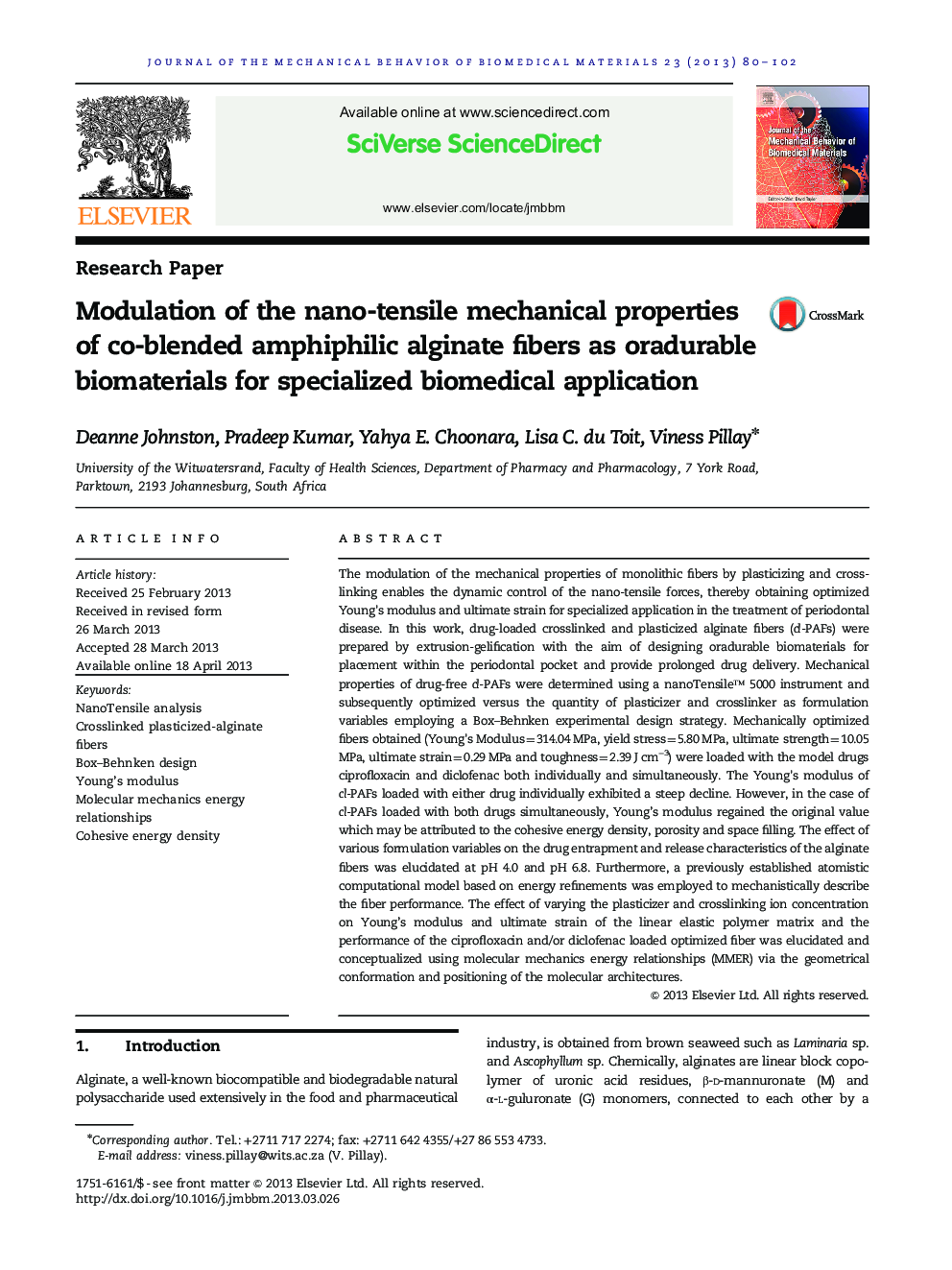| کد مقاله | کد نشریه | سال انتشار | مقاله انگلیسی | نسخه تمام متن |
|---|---|---|---|---|
| 810875 | 1469122 | 2013 | 23 صفحه PDF | دانلود رایگان |

• Plasticizing and cross-linking enables the dynamic control of nanoTensile forces.
• Increased Young’s modulus value was attained by lowering the glycerol content.
• Variation in nanotensility was attributed to cohesive energy density and porosity.
• Diclofenac and ciprofloxacin acted as non-conventional biomedical tensile modifiers.
• Incorporation of the drugs together facilitated the regain of elastic modulus.
The modulation of the mechanical properties of monolithic fibers by plasticizing and crosslinking enables the dynamic control of the nano-tensile forces, thereby obtaining optimized Young's modulus and ultimate strain for specialized application in the treatment of periodontal disease. In this work, drug-loaded crosslinked and plasticized alginate fibers (cl-PAFs) were prepared by extrusion-gelification with the aim of designing oradurable biomaterials for placement within the periodontal pocket and provide prolonged drug delivery. Mechanical properties of drug-free cl-PAFs were determined using a nanoTensile™ 5000 instrument and subsequently optimized versus the quantity of plasticizer and crosslinker as formulation variables employing a Box–Behnken experimental design strategy. Mechanically optimized fibers obtained (Young's Modulus=314.04 MPa, yield stress=5.80 MPa, ultimate strength=10.05 MPa, ultimate strain=0.29 MPa and toughness=2.39 J cm−3) were loaded with the model drugs ciprofloxacin and diclofenac both individually and simultaneously. The Young's modulus of cl-PAFs loaded with either drug individually exhibited a steep decline. However, in the case of cl-PAFs loaded with both drugs simultaneously, Young’s modulus regained the original value which may be attributed to the cohesive energy density, porosity and space filling. The effect of various formulation variables on the drug entrapment and release characteristics of the alginate fibers was elucidated at pH 4.0 and pH 6.8. Furthermore, a previously established atomistic computational model based on energy refinements was employed to mechanistically describe the fiber performance. The effect of varying the plasticizer and crosslinking ion concentration on Young’s modulus and ultimate strain of the linear elastic polymer matrix and the performance of the ciprofloxacin and/or diclofenac loaded optimized fiber was elucidated and conceptualized using molecular mechanics energy relationships (MMER) via the geometrical conformation and positioning of the molecular architectures.
Figure optionsDownload high-quality image (227 K)Download as PowerPoint slide
Journal: Journal of the Mechanical Behavior of Biomedical Materials - Volume 23, July 2013, Pages 80–102